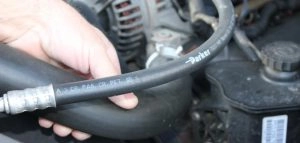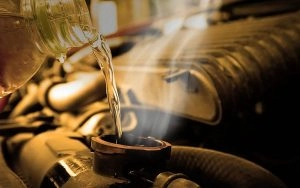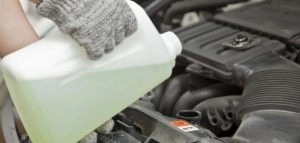A radiator water deficiency is a major disaster, as radiator water is considered very important for the health of the car's engine. It protects the engine from excess heat and maintains its optimal temperature.
Modern engines are more sensitive in terms of their temperature, thus the cooling system is vital for maintaining the health and lifespan of the engine.
And one of the most important elementsCooling SystemIt is the coolant that flows in the radiator, which helps dissipate the heat from the engine to the outside. If there is a shortage in the amount of coolant, it can lead to engine damage.

Reasons for Radiator Water Deficiency
A deficiency in radiator water can occur due to a variety of different reasons. Therefore, let's take a look at seven of the most common causes of radiator water deficiency.
Radiator corrosion
Over time, and when the radiator is exposed to corrosive factors, such as recurrent exposure to moisture and heat, it corrodes, leading to the appearance of gaps and holes in it.
When this corrosion occurs to the radiator, water can leak from inside it to the outside, leading to a decrease in the amount of water in the cooling system. Consequently, the engine temperature rises, which may cause serious damage that negatively affects the performance of the car.
The radiator is low on water due to damage to the radiator cap seal.
The radiator cap and its seal are very important parts of the car's cooling system. The seal of the radiator cap is located on the top part of the cap, which is tightly closed on the head of the radiator to ensure that the coolant does not leak.
When the radiator cap gasket is damaged, it can lead to water leakage. Therefore, you should regularly check the cap and ensure it is tightly closed to minimize the radiator water shortage.
Additionally, damage to the radiator cap will cause an increase in pressure within the cooling system, which leads to the coolant leaking from the system at its weakest point.
Also read:Radiator Cap: 5 Signs Indicating Its Damage
Radiator pipes damage
The radiator hoses transport the coolant to the engine and the water returns to the radiator through them. These hoses are made from reinforced industrial rubber to withstand high temperatures.
Nevertheless, over time, pipes may dry out and crack or develop holes, as they are exposed to high pressure and heat, making them weak and brittle.
The areas where the pipes connect to the radiator are more prone to leaks, as the pipe clamps undergo a lot of pressure, which could cause them to loosen or disconnect entirely.

Damage to the head gasket of the engine.
The gasket is an important part of the engine cooling system, and it helps prevent radiator water loss and leakage into other parts of the car.
In the event of a gasket failure or corrosion, it may allow coolant to leak into the combustion chamber, which can cause a number of problems. The water will then seep into the oil under the pistons, mixing with it and turning the oil into a milky white color.
When the oil and water mix together, the oil becomes ineffective in lubricating the engine as required, which can lead to damage to the engine parts.
Damage to the radiator's water tank (radiator tank)
As you know, the water jug is a part of the cooling system components. It is a small plastic tank connected to the radiator through small hoses where the water it replenishes gathers.RadiatorThe provided text "فيها" translates to "in it" in English. However, it does not provide any context related to car maintenance and repair. Please provide a full sentence for a more accurate translation.
Corrosion can occur in the coolant water tank due to its long-term use or exposure to extreme pressure resulting from increased pressure within the system or exposure to high temperatures.
Continuous exposure of the coolant reservoir to heat, cold, and chemicals in the cooling system can cause loss of rigidity in its plastic walls, leading them to crack. This in turn causes a decrease in radiator water.
The water pump in the radiator (water pump) is damaged.
The water pump plays a crucial role in ensuring the cooling agent reaches all parts of the system. It pumps the cooling water from the radiator to the engine. The water then begins the circulation process within the engine until it returns to the cooling system, specifically to the pump. The pump cools the water after its temperature has risen and returns it back to the engine.
However, sometimes the radiator water shortage comes as a result of the pump being damaged due to several reasons, perhaps the most notable are:
The internal components of the pump are corroding.
It is susceptible to breaking.
Not using the appropriate water or not replacing the coolant for extended periods of time.
Regardless of the reason, when your water pump encounters a problem that prevents it from transferring the coolant throughout the system, your car's engine will ultimately overheat.

The radiator is low on water due to damage to the car's thermostat.
The thermostat in the car is designed to maintain the engine temperature within a certain range to allow the engine to reach optimal performance.
The thermostat contains a valve that controls the flow of coolant in the engine. This valve opens or closes depending on the temperature. When the car's engine reaches a high temperature, the valve opens and the coolant flows to the radiator where it is cooled.
If you notice a decrease in radiator water despite the absence of any leaks, this may be a result of the thermostat not functioning properly.

Comments